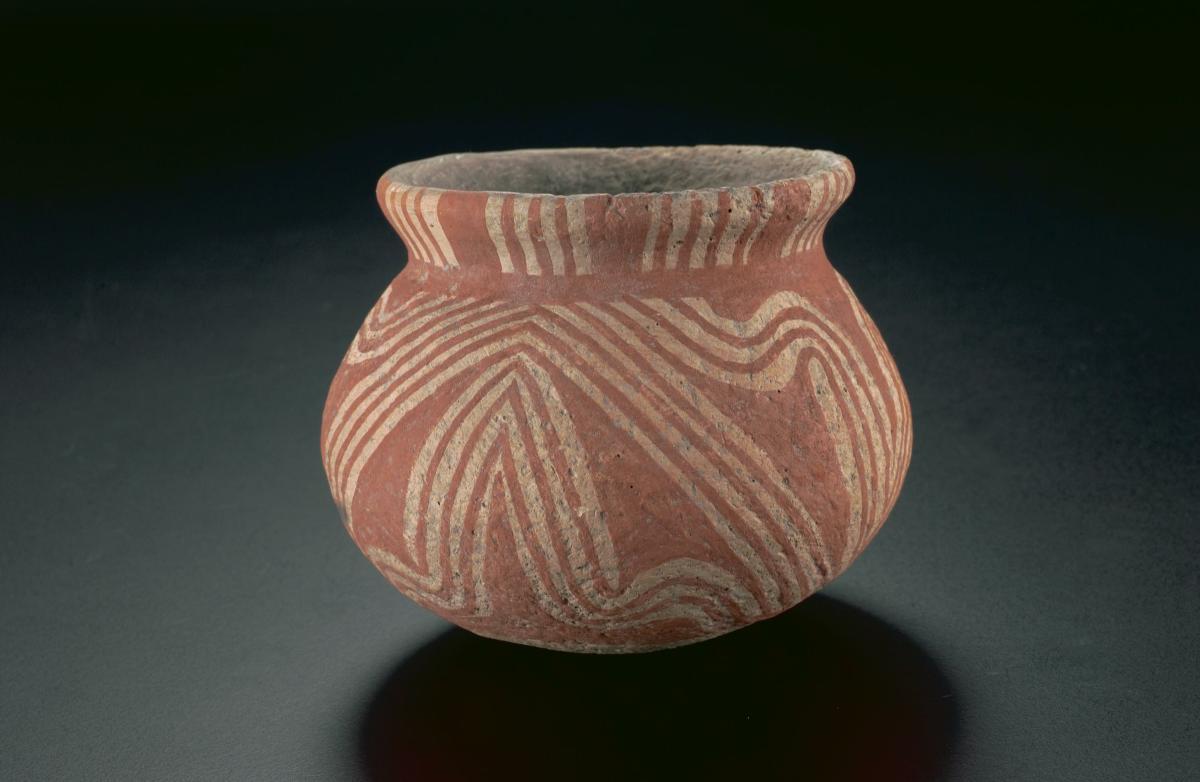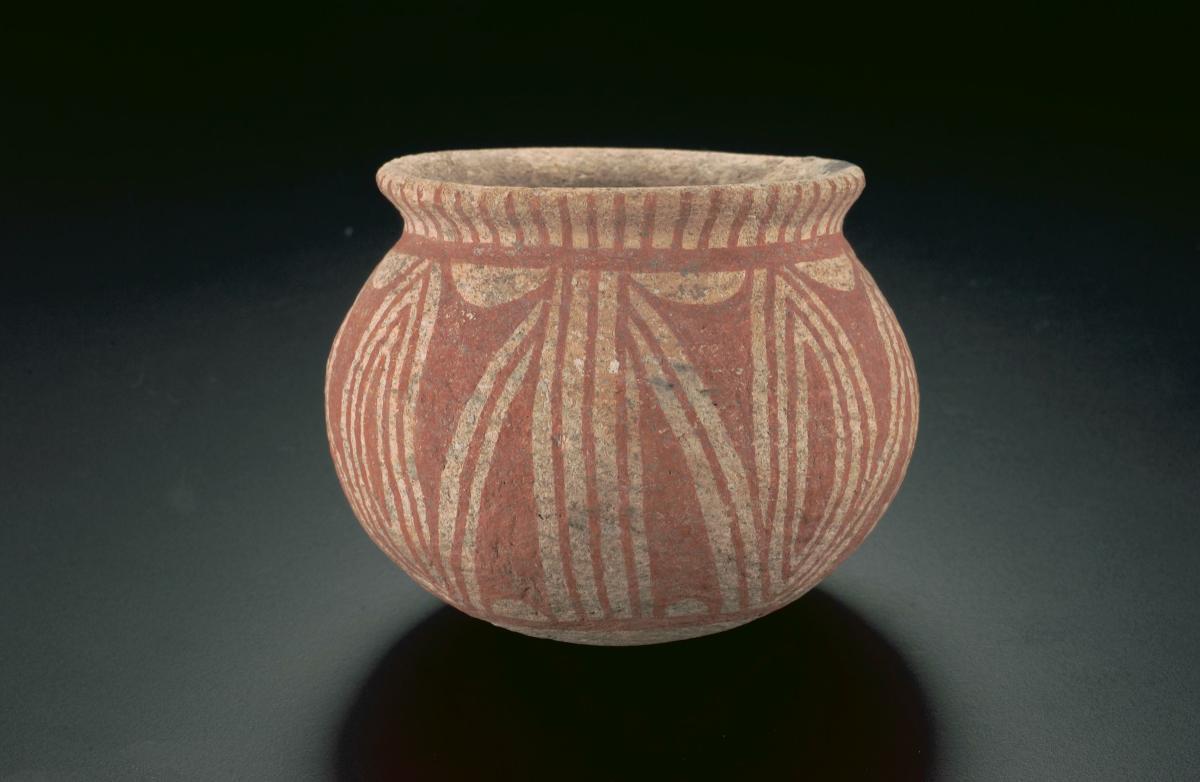This earthenware burial jar was made to contain either food or objects for the afterlife of the deceased. It was made with coils of clay which were joined and paddle-beaten for added strength. Curvilinear designs were then painted in red slip (a liquid clay mixture). Some of the decoration on this piece, appears to have been restored in more recent times. Black smudges on the walls were the result of the the pot coming into contact with burning fuel during the firing.The site of Ban Chiang was first uncovered in 1957. Pottery was found with skeletal remains, glass beads, as well as iron and bronze bracelets. Recent dating methods suggest that there were three mains phases of pottery-making in this culture, with the red slip-decorated wares falling into the most recent phase (300BCE to 300CE).















